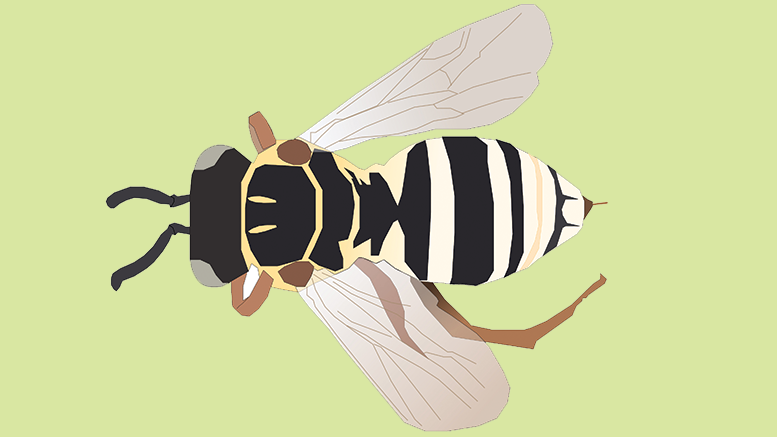Epeolus gibbsi is a species of small, parasitic bee in a group commonly referred to as “cuckoo bees.” The infamous cuckoo birds lay their eggs in the nests of other bird species, duping them into parenthood and ejecting “legitimate” eggs and chicks from the nest to their deaths on the ground. Epeolus gibbsi adopts a similar strategy, targeting cellophane bees found in Manitoba.
Jason Gibbs, an associate professor in the U of M’s department of entomology, discovered the bee now named after him.
Gibbs grew up around honeybees. As his father was a beekeeper, he developed an interest in natural history and biology at an early age.
Primarily a taxonomist, a biologist who categorizes organisms, Gibbs’s role explores the foundational aspects of biology. He aims to document, describe and discover insect species.
“It was only during my PhD work that I realized how just remarkably diverse bees actually were,” he said. “I’ve been working on [that] diversity ever since.”
Gibbs’s PhD work was a taxonomic study of sweat bees, whose name comes from their unique tendency to land on human arms and legs to consume the salt in our sweat. More than 500 species of sweat bees are native to the North American continent.
“They basically occur in almost every terrestrial habitat, you know, from the Arctic all the way to tropical areas, deserts, plain and Pacific islands,” Gibbs said.
“They’re everywhere and they’re incredibly interesting from a social behavioural standpoint.”
While some sweat bees are solitary with only a single female or mix of nests, others belong to complex societies with a queen and workers of varying sizes. Some, similar to Epeolus gibbsi, are even parasitic.
Gibbs explained that bees are essentially vegetarian wasps. Around 120 million years ago, likely in the Cretaceous period, bees diverged from a group of hunting wasps that developed a taste for nectar.
As a carnivorous species, wasps prey on other insects, such as flies and stink bugs. Some exclusively prey on bees and are known as beewolves.
Wasps form annual colonies initiated every spring by a female who lays a brood of worker wasps. Once hatched, the workers grow the colony’s size over the season. Wasp colonies usually reach their maximum size in late August and September.
Though the number of wasp colonies remains about the same every year, Gibbs explained that Manitoba has experienced a relatively warm late summer, allowing colonies to thrive for longer.
“As a result, their colonies are really big, so they have to forage more and more to provide food for all of those individuals,” he said.
“Resources get scarce as the summer extends more and more, and they’re going to garbage cans, going to picnics, and they’re looking for any sort of protein or sugar that they can find. That’s where they interact with us.”
Additionally, the warm summer allows more people to remain sitting on outdoor picnic tables and patios more than they might otherwise be doing in chillier weather, exposing them to wasps.
Gibbs highlighted the diversity of bees and wasps.
“We’re familiar with honeybees, bumblebees and sort of general category yellow jackets, but it’s really the tip of the iceberg. Those are just the really big social groups of bees and wasps that we interact with a lot. But there’s approximately 400 species of bees in Manitoba.”
He added that, though bees are relatively well-studied, there are an “overwhelming” number of undescribed insect species. Dozens of undescribed species of bees alone sit in drawers at the U of M’s department of entomology. Eventually, they too will have names.
“It’s not some special talent that is required to [discover insects]. You just have to sort of go out and look for them,” Gibbs said. “Just about anybody who’s really […] engaged, and if they get interested, can discover all kinds of weird and wacky new things about insects.”
“I think it’s just perhaps underappreciated how fun and cool insects are. Sometimes people think of them as kind of creepy crawly things, but they’re really beautiful.”


